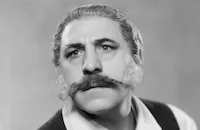The Face at Your Window
Cast & Crew
Richard Stanton
Gina Reilly
Earl Metcalfe
Edward Roseman
Boris Rosenthal
Walter Mcewen
Film Details

Synopsis
Hiram Maxwell and Nicholas Harding, both factory owners, exhibit two different philosophies of management: Maxwell is sympathetic to his employees while Harding remains blind to the needs of his workers. Maxwell's son Frank is engaged to Harding's daughter Ethel but fancies Ruth Kravo, a Russian immigrant who also works at the factory. While leaving the factory one night, Frank is stabbed in the back, and Ruth is arrested although her jealous labor agitator admirer Ivan Koyloff is the more likely suspect. Released on lack of evidence, Ruth becomes a secret agent, spying on her fellow Russians. One day a stranger, Comrade Kelvin, comes to town and secretly organizes the workers, preparing them to strike. The employers, fearing trouble, meet and decide to cooperate with the men. Harding reneges on his promises, however, and the next morning issues an order for longer hours and no wage increase. This precipitates a revolt among the workers, and the American Legion is called to establish peace. Frank calms the mob with a patriotic speech, and one of the labor leaders steps forth and offers his hand, while Frank extends his other hand to Ruth.

Director
Richard Stanton
Cast
Gina Reilly
Earl Metcalfe
Edward Roseman
Boris Rosenthal
Walter Mcewen
Diana Allen
Alice Reeves
Fraser Coulter
William Corbett

Robert Cummings

Henry Armetta
Frank Farrington

Film Details

Quotes
Trivia
Notes
The copyright catalog states the length of this film is eight reels, Moving Picture World states six reels and Wid's lists 7,000 feet. Although not an obvious element in the final film, a pre-production news item describes the story as a cautionary tale about runaway immigration. Advertisements for the film include pictures of hooded Klansmen, and one review mentions the fact that the American Legion members were dressed inexplicably in traditional Ku Klux Klan robes. One source credits Max Marcin, who was a well-known playwright, with writing the "drama," but it is unclear whether this term refers to a stage play or an original screen story. All other sources credit Marcin with the "story," and no evidence of the existence of a stage play has been found.












